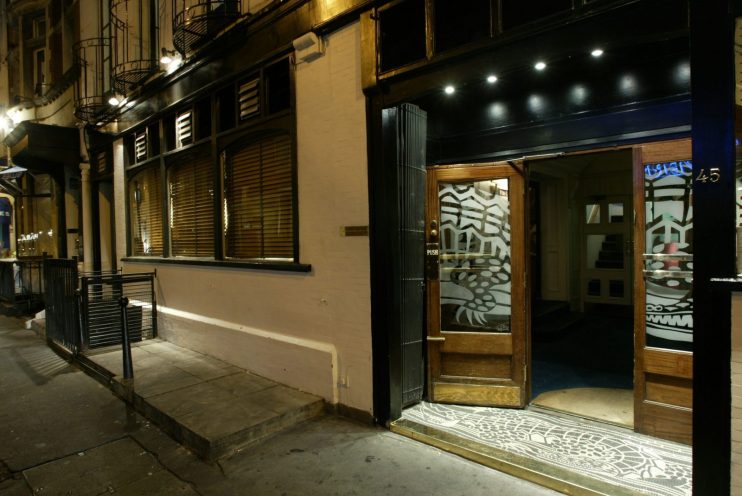Members’ clubs in the age of Covid, from Groucho to Boisdale

Are you clubbable? Some people are, fiercely, while others disdain the whole idea. It is thought men are more clubbable than women, though that may not be supported by facts. In any event, if you are what PG Wodehouse would have called a clubman, you will be eagerly awaiting Monday 17 May and the reopening of indoor hospitality. On that day, too, most members’ clubs will finally reopen their doors.
Why do we join clubs? One could point to any number of factors—facilities, services, convenience, interests—but in truth it’s about exclusivity. We join partly to associate with people with whom we have something in common. It could be profession, political leaning, hobby or simply vibe, but it takes a great deal of uncertainty out of the social situation. A member of the Turf Club, for example, can expect to meet fellow horse-racing fans in the bar. The size of a club also allows us to develop social networks, so that it becomes a place where we can look forward to chance meetings with friends.
There is also, of course, the flipside of exclusivity. We join clubs because others are not members of them. To include is also to exclude, and to have a haven to which one can retreat, entry to which is not open to all, is attractive to a very human part of our psyche. A club allows us to be a gracious host in a way that simply inviting someone for a drink does not.
London has a niche for almost anyone in clubland. Most forbidding are the traditional gentlemen’s clubs of Pall Mall and St James’s. The Athenaeum was founded for the cleverer sort, “literary and scientific men”, while the Travellers’ Club, next door, was for those with itchy feet, later becoming the haunt of choice for Foreign Office mandarins. The Reform was the club from which Phileas Fogg set out on his epic circumnavigation and requires prospective members to subscribe to the principles of the Reform Act 1832.
Round the corner on St James’s Street are the grandest institutions, White’s, Brooks’s and Boodle’s. They still see aristocrats and landowners as well as those whose wealth has come in more ‘modern’ ways. This is as close as you will find to the authentic London clubland of the history books, though politicians, to take one profession, are increasingly rare, either because of cost or an unwillingness to associate with such old-fashioned institutions.
In recent decades, the members’ club has been reinvented, or at least reimagined for a new generation. The Groucho, of course, still has the sheen of celebrity and the echoes of Britpop and Young British Artist tales of excess and debauchery. Soho House, founded by Nick Jones, began above Old Compton Street’s Café Bohème in 1995 but has now exploded into a chain: it has 28 clubs worldwide, and offers almost an entire lifestyle, from the Greek Street townhouse which was its first independent base to the bucolic idyll of Soho Farmhouse on Oxfordshire.
Soho House, like many of the newer clubs, began with a focus on ‘creatives’ (it is such a fetish for them that ties are forbidden and those working in financial services may not become members). So too did the Century Club, now 20 years old, and the sadly defunct Hospital Club. They have been defined almost in antithesis to the clubs of St James’s, and it is a contrast which has probably suited both parties, as it has given the old guard a rather sharper and clearer image: you will find young people in the Travellers’ and the RAC, for example, though generally of a different stamp from those in Soho.
A comprehensive guide to the capital’s members’ clubs would run to a hefty volume. I have not touched, for example, on the genuine nightclubs like Tramp and Annabel’s, of which membership is highly sought and expensively bought, but which see rather more lively evenings than the Army and Navy. Nor have I touched on the activity-orientated establishments like Ranald MacDonald’s brilliant Boisdale chain (jazz and cigars) or 12 Hay Hill (business).
A great lacuna, too, is the small group of clubs which are women-only. The AllBright counts Naomie Harris and Martha Lane Fox among its first members; the Wing combines co-working space with exclusivity; and the University Women’s Club is the ground zero for all-female society. According to the maxim “Write what you know”, I will say no more.
Being a member of a club can be a thing of great joy and comfort. Used right, it is genuinely a half-way house between home and the outside world, as well as a place for deliciously casual meetings and happenstance encounters. If you’re tempted, go and have a look. Most clubs will be at least polite to prospective members, and many will be positively enthusiastic. Find your niche, or your niches, and revel in them. And, if you choose the right ones, I may see you around.